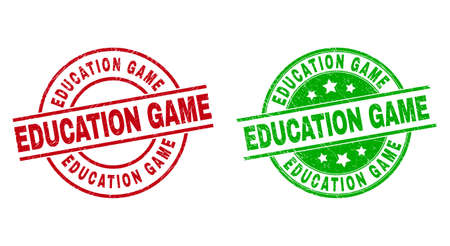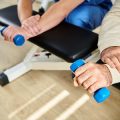1. Understanding the Digital Divide Among Older Adults
The digital divide is a real challenge for many older Americans. As technology becomes a bigger part of everyday life, not everyone has the same opportunity to access or use it. For older adults, several factors contribute to this gap. Lets explore what these are and how they affect digital literacy, especially when it comes to assistive technology.
Access: Is Technology Available?
One key factor is access. Not all communities have the same internet infrastructure. In rural areas, reliable high-speed internet can be hard to find. Even in cities, some neighborhoods may lack affordable internet options or public access points like libraries.
| Location | Common Challenges |
|---|---|
| Urban Areas | Limited public Wi-Fi, cost barriers |
| Rural Areas | Poor internet coverage, fewer service providers |
| Suburban Areas | Better coverage but affordability issues remain |
Affordability: Can People Pay for It?
Even if internet service and devices are available, affordability is another hurdle. Many older adults live on fixed incomes or retirement savings. The cost of buying a new smartphone, tablet, or computer—and then paying monthly internet bills—can be overwhelming.
| Item | Estimated Cost (2024) | Potential Barrier for Seniors? |
|---|---|---|
| Smartphone | $300 – $1000+ | Yes |
| Laptop/Tablet | $200 – $1200+ | Yes |
| Internet Service (monthly) | $50 – $100+ | Yes |
| Assistive Tech Devices (e.g., hearing aids) | $1000 – $5000+ | Yes |
Generational Gaps: Comfort with Technology Use
The generational gap in technology adoption is also important. Many older adults did not grow up using computers or smartphones. Learning new tech skills as an adult can feel intimidating. This leads to uncertainty or fear about breaking something, falling for scams, or simply not knowing where to start.
Main Generational Barriers:
- Lack of early exposure to digital devices and software
- Anxiety about making mistakes or privacy concerns online
- Lack of tailored training resources designed for seniors’ learning styles and needs
- Misinformation about what technology is safe or useful for them
The Impact on Assistive Technology Adoption
The digital divide doesnt just make it harder for older adults to video chat with family or shop online—it also limits their ability to use assistive technologies that could greatly improve their quality of life. Tools such as voice-activated home assistants, health monitoring apps, and specialized hearing devices often require basic digital skills and consistent internet access.
2. Overview of Assistive Technology for Aging Populations
As more older Americans embrace digital tools, assistive technology is playing a key role in helping them stay independent and connected. These technologies are designed to support daily activities and improve quality of life, especially for those with vision, hearing, or mobility challenges. Lets take a closer look at some common assistive technologies used by aging populations and how they can make everyday tasks easier.
Common Assistive Technologies for Older Americans
| Technology | What It Does | How It Helps |
|---|---|---|
| Screen Readers | Read text on screens aloud | Makes it easier for people with vision loss to use computers and smartphones |
| Voice Assistants (like Alexa or Google Assistant) | Respond to spoken commands to perform tasks like making calls, setting reminders, or controlling smart home devices | Simplifies daily routines and increases independence, especially for those with limited mobility or dexterity |
| Mobility Aids (smart walkers, powered wheelchairs) | Help users move around safely, sometimes featuring GPS or emergency alert systems | Boosts confidence and allows older adults to get out and about safely |
| Hearing Amplifiers and Personal Sound Amplification Products (PSAPs) | Enhance sound for people with hearing difficulties | Makes conversations clearer, helping users stay social and engaged |
| Larger Button Phones and Tablets | Devices with bigger screens and buttons for easier use | Reduces frustration when dialing numbers or navigating apps |
| Medication Reminders (apps or smart pill dispensers) | Send alerts or automatically dispense medicine at set times | Helps prevent missed doses and supports health management |
The Impact on Daily Living
When older adults use these assistive technologies, they can do more things on their own—like reading emails, staying in touch with family, getting where they need to go, or keeping up with medications. For many, these tools offer peace of mind for both themselves and their loved ones.
The Importance of Digital Literacy Training
However, understanding how to use these devices is not always straightforward. Many older Americans benefit from hands-on training and ongoing support to feel comfortable with new technology. Community centers, libraries, and local nonprofits often offer classes that focus on practical skills using real-world examples.

3. Barriers to Digital Literacy in Older Americans
Many older Americans face unique challenges when it comes to learning about and using assistive technology. Understanding these barriers is the first step to bridging the digital divide and helping seniors become more comfortable with technology that can improve their quality of life.
Limited Exposure to Technology
Unlike younger generations who grew up surrounded by smartphones, computers, and the internet, many seniors did not have regular access to digital devices until later in life. This lack of early exposure makes it harder for them to pick up new skills quickly. Everyday tasks like downloading an app or setting up a device can feel overwhelming if you’ve never done it before.
Physical Limitations
As people age, physical changes may make using technology more difficult. Vision problems, arthritis, reduced hand strength, or hearing loss can all interfere with operating smartphones, tablets, or computers. Even simple actions like tapping small icons or reading on-screen instructions can become big obstacles.
Common Physical Barriers
| Barrier | Impact on Technology Use |
|---|---|
| Poor eyesight | Difficulties reading screens or recognizing icons |
| Limited hand dexterity | Trouble typing or swiping on touchscreens |
| Hearing loss | Missing audio cues or instructions from devices |
Apprehension About Technology
Many older adults feel anxious about using new technology. They might worry about making mistakes, breaking something, or falling for scams. Sometimes, they believe technology is “just for young people” or that they are “too old to learn.” These fears can prevent seniors from even trying to use assistive devices that could help them stay independent and connected.
Common Emotional Barriers
| Apprehension | Description |
|---|---|
| Fear of making mistakes | Anxiety about damaging devices or losing important information |
| Lack of confidence | Belief that learning is too hard or not possible at their age |
| Mistrust of technology | Concerns about privacy, scams, or data security online |
The Importance of Addressing These Barriers
If we want to promote digital literacy around assistive technology for older Americans, we need to recognize these real-life challenges. By creating supportive environments and providing accessible resources, we can help seniors gain the confidence and skills they need to benefit from today’s digital tools.
4. Effective Strategies for Promoting Digital Literacy
Community-Based Training: Building Trust and Comfort
For many older Americans, learning new technology can feel intimidating. Community-based training programs make digital learning more accessible and comfortable. These programs are often held at local senior centers, libraries, or churches—places where older adults already feel welcome. Trusted trainers or volunteers provide step-by-step lessons in a familiar environment. This approach helps reduce fear and builds confidence, making it easier for seniors to ask questions and try new things.
Key Features of Community-Based Training
| Location | Benefits | Example Activities |
|---|---|---|
| Senior Centers | Familiar setting, social support | Intro to smartphones, online safety workshops |
| Libraries | Access to devices, trained staff | E-reader tutorials, internet basics classes |
| Faith Organizations | Cultural relevance, trusted community leaders | Group tech lessons after services, device lending programs |
Intergenerational Learning: Bridging Generations for Better Outcomes
Younger family members and students can play a big role in helping older adults become more digitally literate. Intergenerational learning pairs seniors with tech-savvy youth who offer patient, hands-on guidance. This not only improves digital skills but also strengthens family and community bonds.
Popular Intergenerational Programs
- Tech Buddy Programs: Local high schools or colleges match students with older adults for regular tech help sessions.
- Family Tech Nights: Families gather to explore new apps or devices together in a relaxed setting.
- Museum & Library Events: Special workshops encourage grandparents and grandchildren to learn about assistive technology side by side.
User-Friendly Tech Design: Making Devices Accessible for All
A major barrier for many older adults is complicated technology. Companies are now creating user-friendly devices that consider the needs of seniors—larger buttons, voice commands, simple menus, and clear instructions. Assistive technologies designed with input from older users help boost confidence and independence.
User-Friendly Features for Older Adults’ Devices
| Feature | Description | How It Helps Seniors |
|---|---|---|
| Larger Text & Icons | Bigger fonts and clear images on screens | Easier to read and use for those with vision changes |
| Voice Assistance | Siri, Alexa, Google Assistant support voice commands | Makes navigation hands-free and simpler for mobility limitations |
| Simplified Menus & Layouts | Streamlined home screens with fewer options per page | Reduces confusion and helps seniors find what they need quickly |
| Tutorials & Guided Setup | Step-by-step instructions when starting a device or app for the first time | Gives confidence and minimizes frustration during learning process |
Culturally Relevant Support: Meeting Seniors Where They Are
Cultural understanding is key to successful digital literacy programs. Trainers who speak the same language or share similar backgrounds with learners build stronger connections. Culturally tailored materials (like videos in different languages or examples based on everyday American life) make training more relatable. Offering snacks, group activities, or themed sessions (such as “Staying Connected with Grandkids Online”) can make digital learning enjoyable and meaningful for older adults across diverse communities.
5. Building a Supportive Ecosystem for Lifelong Digital Learning
The Importance of a Team Approach
To help older Americans become comfortable with assistive technology, it’s important to create a supportive network around them. This means bringing together caregivers, healthcare providers, local organizations, and policymakers. Everyone has a part to play in making digital learning ongoing and accessible for seniors.
Roles in the Supportive Ecosystem
| Who | What They Can Do |
|---|---|
| Caregivers (family & professional) | Encourage use of technology at home, offer patient guidance, set up devices, and practice with seniors regularly. |
| Healthcare Providers | Introduce patients to digital health tools during appointments, recommend relevant apps or devices, and connect patients with tech training resources. |
| Local Organizations (senior centers, libraries) | Host digital literacy workshops, provide hands-on support sessions, and loan out devices for practice. |
| Policymakers | Create funding programs for affordable internet and devices, support community tech education projects, and promote policies that make technology accessible to all seniors. |
Making Learning Ongoing and Accessible
Lifelong digital learning means not just one-time classes but having ongoing opportunities to practice and ask questions. For example:
- Regular Classes: Weekly or monthly group lessons at local libraries or senior centers keep skills fresh.
- One-on-One Help: Volunteers or family members can offer personal coaching at home or by phone.
- User-Friendly Materials: Simple guides with large print and step-by-step pictures make learning less intimidating.
- Peer Support: Seniors often learn best from each other; “tech buddies” programs pair experienced users with beginners.
Tackling Common Barriers Together
- Cost: Local organizations can help connect seniors with free or low-cost internet plans and devices.
- Anxiety or Frustration: Caregivers and trainers should encourage patience and celebrate small victories to build confidence.
- Lack of Awareness: Healthcare providers can explain how digital tools improve daily living and independence.
The Power of Community Partnerships
No one group can do this alone. When families, professionals, local groups, and decision-makers work together, they create a friendly environment where older adults feel safe exploring new technologies. This helps ensure that everyone gets a fair chance to benefit from the digital world—no matter their age or experience level.


